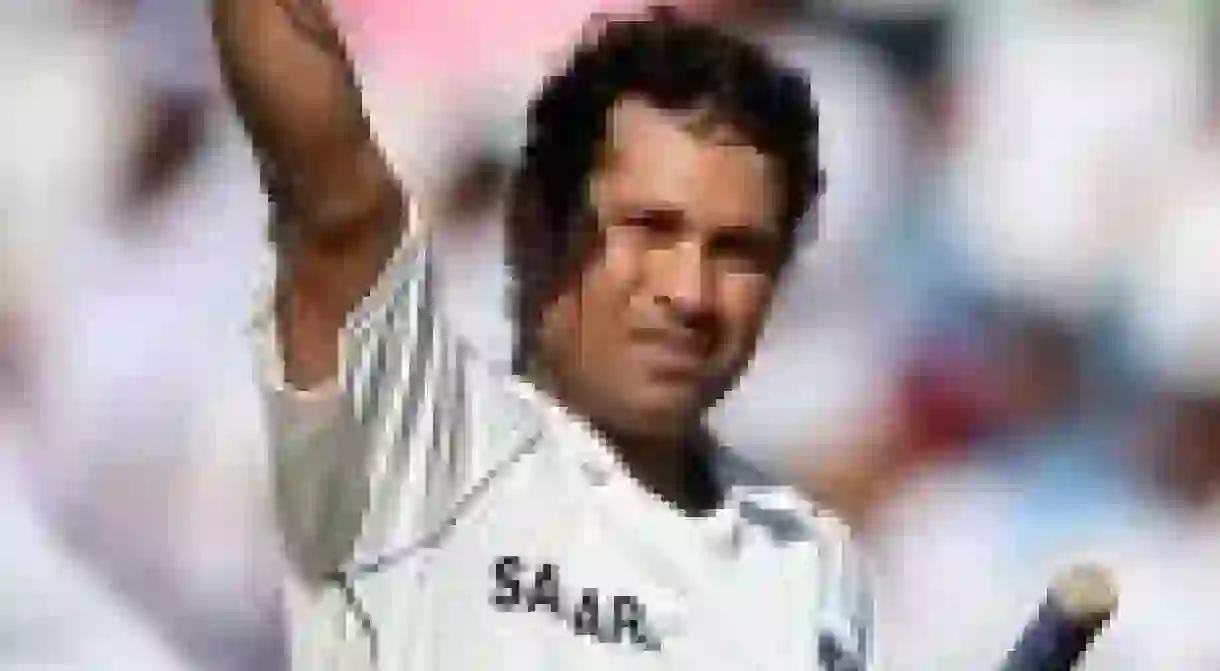Why Cricket Is So Popular In The Indian Subcontinent

George Bernard Shaw once famously exclaimed: “Cricket is game played by 11 fools and watched by 11,000 fools.” It certainly rings true in the Indian subcontinent, where even an inconsequential matchup still brings life to a standstill for three, six or 80 hours, depending on which format you’re watching.©Pulkit Sinha/Flickr
And even more so in India itself, where we manage to revere our cricket heroes even when they’ve been thrashed by the English, pulverized by the men down under and finally emasculated by the pithy Bangladeshi team.

Cricket is a religion in India, Pakistan, Sri Lanka and Bangladesh. It is a game of the gods. Right from the day they’re born, babies are taught to worship their cricketers; and later when they’re grown up, they’re taught to vote for them in their countries’ legislatures. The game will never die out in this region; life would be unfathomable then. We wouldn’t have any clue what to talk to our neighbors about.

Many great books have highlighted the prevalence and power of this gentlemanly, no, godly game in Asia. A fine example of this was the 2012 DSC Prize winning novel Chinaman by Shehan Karunathilaka. Written from the point of view of a retired alcoholic sportswriter, it chronicles his life and obsessive search of Pradeep Matthew, an elusive spin bowler who he believes is the greatest cricketer in the world. The best quality of the book is that it integrates contemporary Sri Lankan issues like the looming threat of the LTTE, gamblers and gangsters into the story arc which leads the book to read like a metaphorical cricket match. It’s a stroke of genius from the author, who admitted to have no idea of the propriety of the term ‘chinaman’ in cricket, before he started writing the book.
Another book which comes to mind is The Zoya Factor (2008) written by Indian novelist Anuja Chauhan. Light-hearted, cheeky and endearing, it tells the story of Zoya Solanki, an ad-woman who goes from being a cricket-hater to becoming the Indian team’s lucky charm. This was a landmark book in India because it is a female author writing about cricket for the first time. What the book signified, was that with the addition of glitz and glamour to an otherwise drab sport by the advent of Premier League cricket, women were becoming more and more enthralled by the game’s charms.

Timeri N. Murari’s The Taliban Cricket Club follows the life of young journalist Rukhsana, as she witnesses the rise of cricket in the Taliban society. The leaders of Taliban seek to prove on the world stage of sports that theirs is a just and fair society through a new way to pursue their “long-denied diplomatic respect”: cricket. This piece of fiction is not that far away from the real situation in Afghanistan, which noticed a giant leap in both participation in and viewership of the game since it started playing on an international level in 1995. The talented Afghani cricket team has given multiple reasons for its country to smile as it emerged victorious in a number of matches in the subcontinent and elsewhere.
The hugely popular Pakistani statesman Imran Khan originally found his fame through cricket and talks about the sport at length in his autobiography, Pakistan: A Personal History. The book paints an accurate picture of country’s condition during his rise as a fast bowler and journeys on to the political state of present day Pakistan. However, the most entertaining book on the subject from the country has to be Controversially Yours by Shoaib Akhtar, the disgraced bowler who shot to world fame by bowling cricket’s fastest ever delivery. Quirky and often slanderous, it provides valuable insights on how young sportspersons are treated in Pakistan.
I have always considered cricket to be an undervalued sport. It has never the acquired the kind of fame that, let’s say, football has. Maybe this is attributable to the West’s apathy towards the game. The inimitable Robin Williams once opined (ignorantly), ‘Cricket is like baseball on valium’. This perception is highly relative and is in fact, quite the opposite in the subcontinent. In a land of many religions and cultures, if there’s been anything that rises above the differences, it’s cricket. Perhaps the best embodiment of this philosophy lies in the fact that cricket is the best indicator of Indo-Pakistan relations: if they play together, all is well; if they don’t, there’s obviously a crisis.













